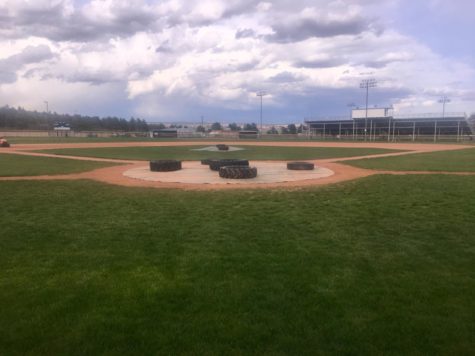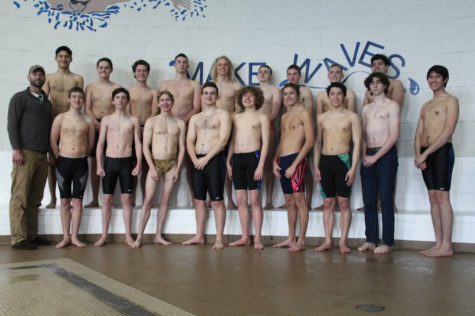“Air Academy” or Just “Air?”
Regardless of grade, age, race, gender, social status, or even nobility, every single student who walks the halls of our high school treasures Academy time. Believe it or not, the thirty-five minutes allotted to students does have an actual purpose. From the beginning, the purpose of Academy has been to meet the needs of Air Academy’s students.
Rumor has it that the administration is considering changing or eliminating Academy for the 2016-2017 school year. As curious as everyone else, I went to Mr. Olson, our principal, who kindly explained to me the situation. To calm the frantic cries of Juniors, Sophomores, and Freshmen, Mr. Olson assured me that no decisions have been made; the department chairs and district committees are simply discussing the options. What are those options, you ask? There are several.
As some students have feared, the district is considering the possibility of removing Academy time altogether. Potentially, the removal of this time would lead to either extended classes, or extended passing periods. In my opinion, extending classes five minutes would have a very meager effect on the productivity of a class. Granted, teachers who work and fill the class with instruction time “bell to bell” might cherish this increased time. However, I’ve personally experienced many classes in which teachers either leave ten to fifteen minutes at the end for students to do homework or simply just “hang out.” Some teachers even stop teaching with five minutes left. Plainly put, there is little point in taking away time for clubs to meet, kids to get help, and make up missed work if the only benefit is five more minutes of instruction time to cram in more curriculum. If passing periods were lengthened to compensate for the loss of Academy, students still wouldn’t have time to make up tests, meet with clubs, or get extra help. If the district feels like we need a “break” between classes, personally I would much rather have one extended break, as we have now. Indisputably, nothing productive can be accomplished in ten minutes while walking from one class to the next.
I, along with many others, understand the district and administration’s view that Academy is “recess.” However, that is not the case for students who actually utilize this time to get work done, meet with clubs, or the like. Though clubs could meet during lunch instead of during Academy, those who are members of multiple clubs, would have increasing time conflicts. A sister school in our district, Pine Creek, encourages after school meetings for clubs. This, however, conflicts with sports. Extra curriculars are valued highly here at Air Academy and making it harder to meet with multiple clubs or sports could potentially decrease that dual involvement–whether that be in multiple clubs or clubs and sports–that is so crucial to Air Academy’s culture.
From a general teacher’s perspective, department meetings are usually held at lunch, while interventions and help for students occurs during Academy. If Academy were to be taken away–“And that’s a big IF,” says Mr. Olson– teachers may potentially have to meet as a department during vital planning periods, or before or after school to prepare initiatives and discuss curricular goals in order for them to assist their students during lunch.
In past years, Interventions has helped many students struggling with grades get one-on-one time with teachers, and make up missed work. Ultimately, this system is set up such that, for each day of the week, kids with falling grades in a certain subject area have mandatory time to solve that problem one way or another. Because each subject belongs to a certain day of the week, students know exactly where they need to be and which teachers they need to see on a daily basis to fix their grades. If Academy is taken away altogether, this necessary system for student help would be crippled.
The main issue, according to Mr. Olson, is that Academy is currently counted as “instructional time,” referring to the state requirements regarding how many minutes students must be under instruction. I won’t get into technicalities because frankly, I don’t fully understand them myself; but as the administration sees it, the cons of Academy time outweigh the pros. By revising Academy time to focus students’ attention to academics rather than socializing, says the administration, they could fairly count this time as “instructional.” Framing Academy so that the focus is more academic, or more strictly extracurricular would be ideal in the district’s eyes. It’s all about “how to best meet the needs of our students,” says Mr. Olson. That has been and always will be the ultimate goal.
Part of the learning process as a high school student is how to manage your time efficiently. Those who choose not to study or receive instructional help during Academy learn the hard way if they haven’t managed their time well. Those who do realize they have a 35 minute opportunity for furthering academic instruction learn to prioritize and successfully prepare themselves for the upcoming college workload. If the administration holds everyone’s hand and sits them in a classroom for more “academic instruction time,” as opposed to letting them learn for themselves, students would be robbed of that individual learning experience of responsible time management.
Though some students take this time for granted and fail to be productive in an academically acceptable way, in my view, the benefits for those who rely on academy for one-on-one help far outweigh the counter-arguments against keeping this time devoted to needs that will aid in academic success. Personally, I use Academy for almost the whole nine yards: club meetings; interviews for teacher college recommendations; meetings with our college counselor; random questions regarding assignments, tests, or concepts; making up quizzes or tests; getting homework help; tutoring classmates; working on group projects; and last but not least: socializing.
The administration and the district must see that the effects of bonding friendships and the development of social skills contribute immensely to the growth of character and progression of teenagers. There is no denying that these years are critical. Imagine a school filled with students who sit in desks from 7:45 am to 2:45 pm, with a 45 minute break for lunch (which would then have to be used for everything I previously listed). Where does the social aspect come into play? Arguably social growth is almost just as important as the academic and extracurricular realms of education. Teenagers especially need time set aside in their day that isn’t necessarily focused entirely on academics. I’m sure an ultimate goal of the Air Academy faculty is to ensure that our school fosters individual growth of character across the board, not only in academics. Allotting us Academy time to do whatever we feel will most richly benefit ourselves–whether that includes club meetings, getting homework help, or meeting new people and making memories–this time is crucial for personal development, however you slice it.

People often refer to me as the Captain, due to my daring nature and ability to lead masses of people across storming seas unharmed. And even if people...













Pam Lively • Nov 16, 2015 at 1:09 pm
Very thorough & well done Jenny Beth! I take it that I’m in the bell-to-bell group?! HAHA As such, I would love to see even 5 extra minutes added to my class time; however, I do agree that the benefits of Academy Period are such that I would not want to see it dismantled either since I use that just as much as my 80 minutes!!!
Lisa Davis • Oct 20, 2015 at 8:14 am
Wow! Well written and articulated. It is my hope that we, as a school, can come up with a solution that supports the students’ need for ACADEMY, the teachers’ need for ACADEMY, and the administration’s commitment to instructional time. Thank you for presenting a thorough article on this most important issue.
Madame Davis
Cris Robson • Oct 15, 2015 at 11:40 am
Great article Jenny Beth!! You really took the time to spell out all of the different issues with losing academy time. Bravo!